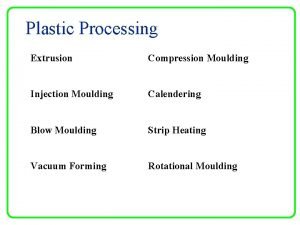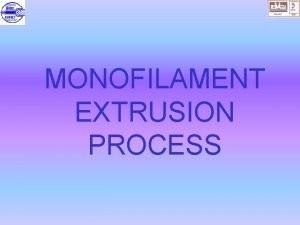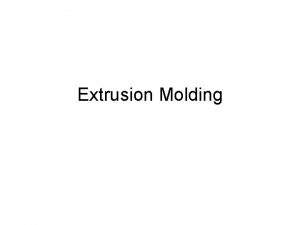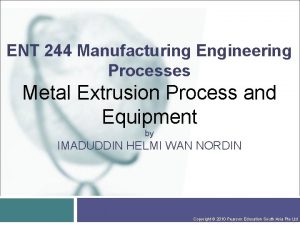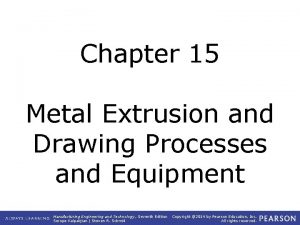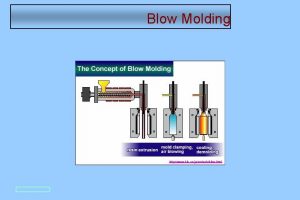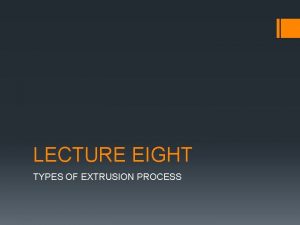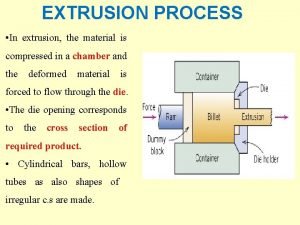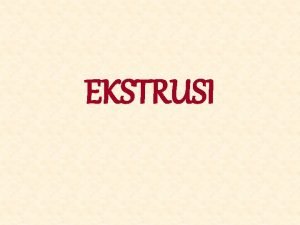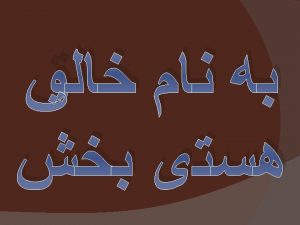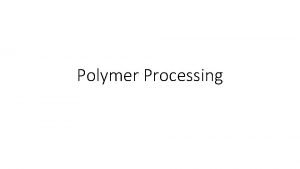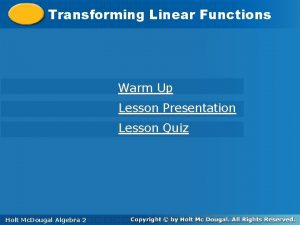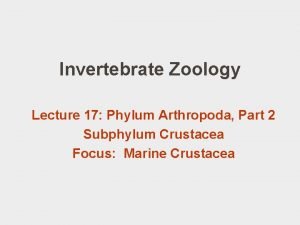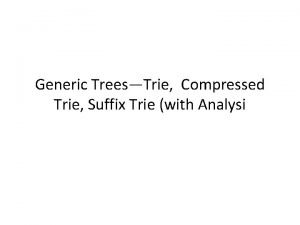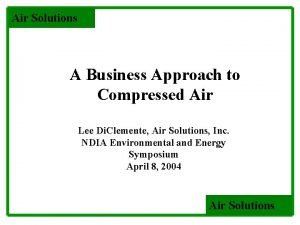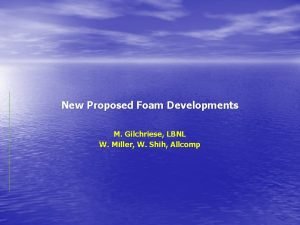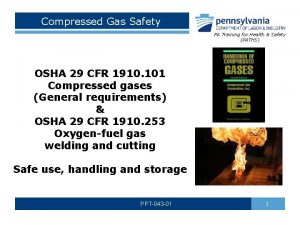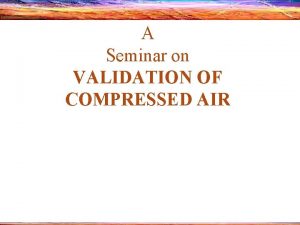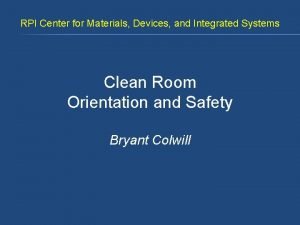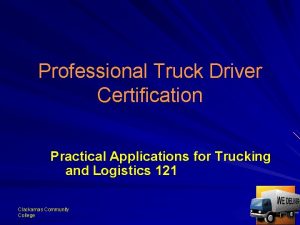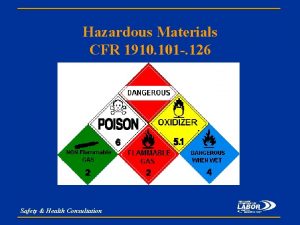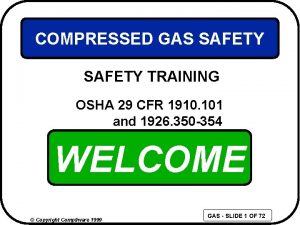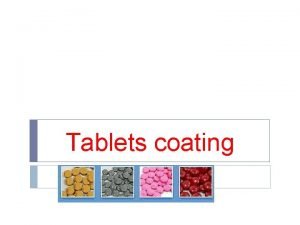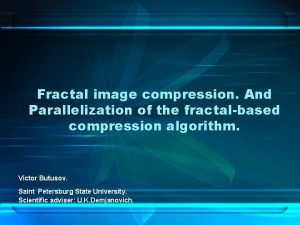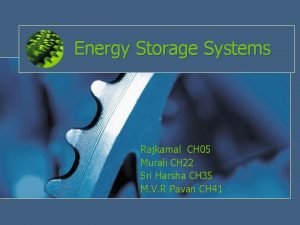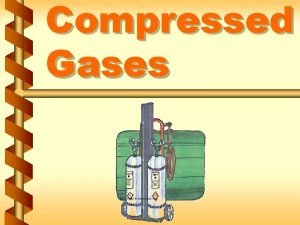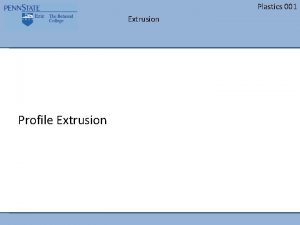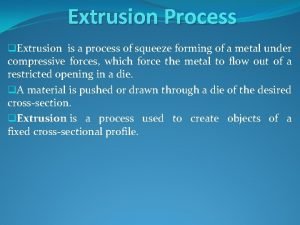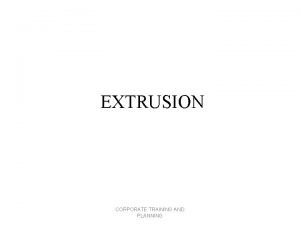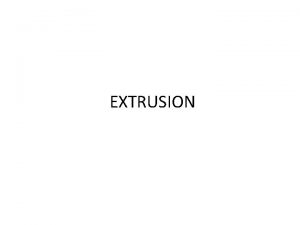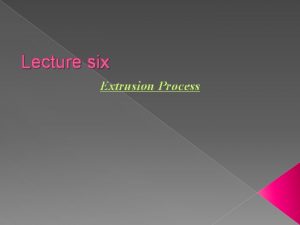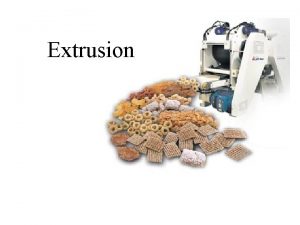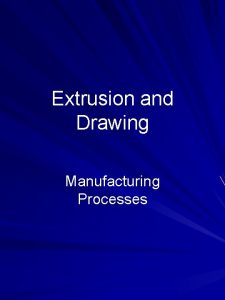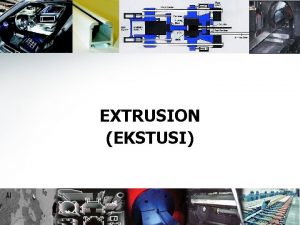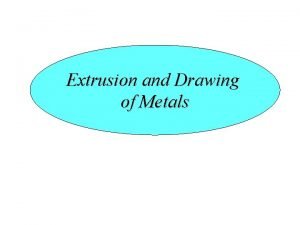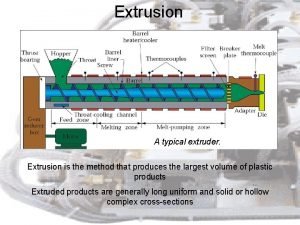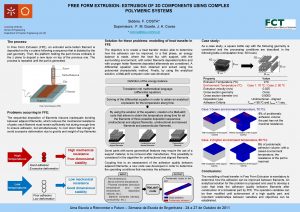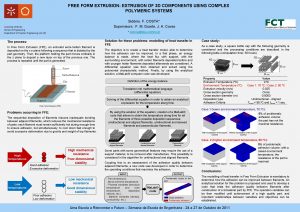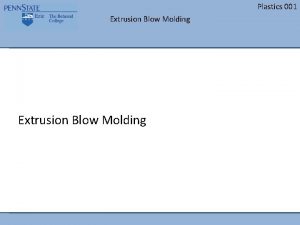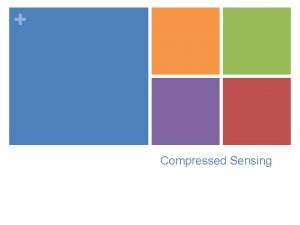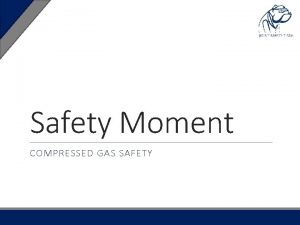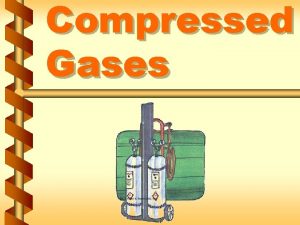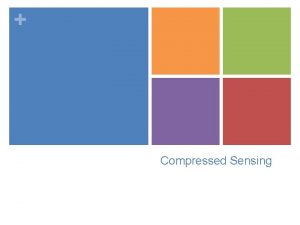EXTRUSION PROCESS In extrusion the material is compressed










![Hot extrusion temperature for various metals Material Temperature [°C (°F)] Magnesium 350 -450 (650 Hot extrusion temperature for various metals Material Temperature [°C (°F)] Magnesium 350 -450 (650](https://slidetodoc.com/presentation_image_h/052485f31719c5227ea439289809b559/image-11.jpg)





































































- Slides: 80

EXTRUSION PROCESS • In extrusion, the material is compressed in a chamber and the deformed material is forced to flow through the die. • The die opening corresponds to the cross section of required product. • Cylindrical bars, hollow tubes as also shapes of irregular c. s are made.

Extrusion of a round blank through a die

• Extrusion process equipment consists of a cylinder/ container into which the heated metal billet is loaded. • On one end of container, die plate with necessary opening is fixed. • From other end, plunger/ ram compress the metal billet against the container walls & die plate, thus forcing it to flow through die opening, acquiring shape of opening. • Dummy block which is steel disc about 40 mm thick, is kept btn billet & ram to protect it from heat & pressure.

• Pressures applied may range from 35 -1000 Mpa. • Pressures for given metal depends on extrusion temperature, reduction in area & extrusion speed. • Materials that can be extrudes are aluminum, copper, steel, magnesium, and plastics, polymers, ceramics, concrete.

Typical products of Extrusion


• Typical products made by extrusion are railings for sliding doors, tubing's having various cross sections. • Extruded parts are cut into desired lengths which then become discrete parts such as brackets, gears, coat hangers. • its ability to create very complex cross-sections and work materials that are brittle, because the material only encounters compressive and shear stresses.

Typical Extruded Products

The extrusion process is often likened to the squeezing of tooth paste from a tube, as is illustrated :

Extrusion Processes Hot extrusion: • Keeping the processing temperature to above the materials re-crystalline temperature to keep material from work hardening. • Most are done on horizontal hydraulic presses that range from 230 to 11, 000 metric tons. • Pressures range from 30 to 700 MPa (4, 400 to 100, 000 psi) therefore lubrication is required, which can be oil or graphite for lower temperature extrusions, or glass powder for higher temperature extrusions.
![Hot extrusion temperature for various metals Material Temperature C F Magnesium 350 450 650 Hot extrusion temperature for various metals Material Temperature [°C (°F)] Magnesium 350 -450 (650](https://slidetodoc.com/presentation_image_h/052485f31719c5227ea439289809b559/image-11.jpg)
Hot extrusion temperature for various metals Material Temperature [°C (°F)] Magnesium 350 -450 (650 -850) Aluminium 350 -500 (650 -900) Copper 600 -1100 (1200 -2000) Steel 1200 -1300 (2200– 2400) Titanium 700 -1200 (1300 -2100) Nickel 1000 -1200 (1900– 2200) Refractory alloys up to 2000 (4000)

Cold extrusion: • Done at room temperature or near room temperature. • Ductile metals like lead, tin, aluminum, copper, zirconium, titanium, molybdenum, ber yllium, vanadium, niobium, and steel. • The advantages of this over hot extrusion are improved mechanical properties, high production rate, closer tolerances, good surface finish. • Tools & automobile parts, motor cycles, collapsible tubes, fire extinguisher cases, shock absorber cylinders and gear blanks.


TYPES OF EXTRUSION PROCESSES • Direct extrusion (or forward extrusion), • Indirect extrusion (or backward extrusion), • Impact extrusion, and • Side extrusion.

Direct (or) Forward Extrusion


Direct Extrusion

• It is most widely used method, in which starting ram material used is a heated billet. • It is heated to its heated temperature and fed into its forging temperature and fed into machine chamber/ container & pressed with hydraulically operated ram through die. • Flow of metal in forward extrusion is same as that of ram direction.


• There is a reusable dummy block between the ram and the billet to keep them separated. • major disadvantage is force required to extrude the billet is greater than that needed in the indirect extrusion process because of the frictional forces introduced by the need for the billet to travel the entire length of the container. • To reduce this friction lubricants are used. • Ex: Oils with graphite powder at low temp.

Advantages: • • • Complex Integral Shapes Cost-Effective Design Flexibility Simple fastening and assembly Easy fabrication Low Tooling Costs Good Machinability Precision Tolerances Shorter Lead Times Versatility in Joining Virtually Seamless

INDIRECT EXTRUSION OR BACKWARD EXTRUSION



• In order to completely overcome the friction, backward extrusion process is used. • Ram/ plunger used is hollow, as it presses the billet against back wall of die chamber/ container the metal flows through die. • As the billet does not move inside the chamber there is no friction between them. • Less force is required in this process.

ADVANTAGES: • A 25 to 30% reduction of friction, which allows for extruding larger billets, increasing speed, and an increased ability to extrude smaller cross-sections • There is less of a tendency for extrusions to crack because there is no heat formed from friction • The container liner will last longer due to less wear • The billet is used more uniformly so extrusion defects and coarse grained peripherals zones are less likely.



DEFECTS IN EXTRUSION • Depending on material condition & on process variables, extruded parts can develop several types of defects that can significantly affect their strength, quality. • Principal extrusion defects are; 1. Surface cracking (c) 2. Pipe (b) 3. Internal cracking (a)

DEFECTS

1. Surface Cracking: • If extrusion temp, friction/ speed is too high, surface temperatures rise significantly, and this condition may cause surface cracking & tearing. (fir-tree cracking, speed cracking) • These occur specially in Al, Mg, Zinc alloys. • These defects can be avoided by lowering the billet temperature & extrusion speed.

2. Pipe: • This type of metal flow pattern tends to draw surface oxides, impurities towards centre of billet which is called as pipe defect/ tail pipe/ fishtailing. • These are obtained because of high friction, maximum temperatures at outside of billet. • Defects as much as one third of length of extruded product, to be cut off as scrap.

3. Internal / Centre/ Chevron cracking: • The centre of the extruded product can develop cracks called center-burst, arrow head fracture. • These are attributed to a state of hydrostatic tensile stress at the centre line in the deformation zone in the die.

Hydrostatic Extrusion


• It is another way to extrude aluminum profiles. • In this process, the chamber is first filled with a fluid which transmits the pressure to the billet. • This billet is then extruded using the die. There is no question of friction along the container walls. • the main difference is that in case of Hydrostatic extrusion there is no direct contact between the container and the billet.

• It is usually carried at room temperature, using vegetable oils as the fluid. • For elevated temperatures waxes, polymers, glass are used. • Brittle materials like gray c. i are extruded successfully by this method, because hydrostatic pressure increases the ductility of material.

Advantages • Owing to the pressurized fluid, the lubrication is very effective • Extruded product has good surface finish along with dimensional accuracy • As friction is almost absent, it is quite possible to use dies that has very low semi-cone angle. • Minimal friction

• Some typical shapes produced are angles, rods, T-profiles or dumbbells. • Other shapes to be produced can single-hollow sections like tubes.

IMPACT EXTRUSION


• In backward cold extrusion called Impact extrusion, the set up consists of die, punch as shown in fig. • The slug for making the component is kept on die & punch strikes the slug against the die. • Metal is then extruded through the gap between punch & die opposite to movement of punch. • The height of side walls is controlled by amount of metal in slug.

• This process is mainly used for making short lengths of hollow shapes like collapsible tubes for housing plates, liquids, spray cans. • Diameter of parts made can approach 150 mm. • For making discrete parts. • performed at higher speeds and shorter strokes than conventional extrusion.


Manufacturing of toothpaste tube Applications: Tooth paste tubes, soft drink cans & shell cases.


SIDE EXTRUSION


• In side extrusion the movement of the material is in a direction perpendicular to that of ram motion. • Since the metal flows in sideward direction the force required is very high& hence mostly used in the case of non ferrous metals and highly plastic materials like lead. • Presence of cable produces a seamless tube.

TUBE EXTRUSION

• It is actually a forward extrusion method using a mandrel to form the bore of the tube as shown in fig. • First mandrel is pushed through centre of billet & die, followed by applying pressure on billet by advancing the plunger. • Metal is forced to flow through the opening between the die & mandrel. • Most of the metals are hot extruded, although some of these are cold extruded, for production of seamless tubes.

• the clearance between the mandrel and the die wall determines the wall thickness of the extruded tube.

Metals that are commonly extruded include: Aluminium is the most commonly extruded material. Aluminium can be hot or cold extruded. If it is hot extruded it is heated to 575 to 1100 °F (300 to 600 °C). Examples of products include profiles for tracks, frames, rails, mullions, and heat sinks. Brass is used to extrude corrosion free rods, automobile parts, pipe fittings, engineering parts. Copper (1100 to 1825 °F (600 to 1000 °C)) pipe, wire, rods, bars, tubes, and welding electrodes. Often more than 100 ksi (690 MPa) is required to extrude copper. Lead and tin (maximum 575 °F (300 °C)) pipes, wire, tubes, and cable sheathing. Molten lead may also be used in place of billets on vertical extrusion presses.

DRAWING • It is a metalworking process used to reduce the crosssection of a wire/ rod by pulling the wire through a single, or series of, drawing die(s). • Although similar in process, drawing is different from extrusion, because in drawing the wire is pulled, rather than pushed, through the die.


• Major variables in drawing are similar to those in extrusion: reduction in c. s area, die angle, friction along die work interfaces, drawing speed. • In this process, rods made of steel or non ferrous metals and alloys are pulled through conical dies having a hole in the centre.

DRAWING PROCESS • The wire is prepared by shrinking the beginning of it, by hammering, filing, rolling or swaging, it will fit through the die. • The wire is then pulled through the die. As the wire is pulled through the die, its volume remains the same, diameter decreases, the length increases. • Usually the wire will require more than one draw, through successively smaller dies, to reach the desired size.

• An example of product produced in a continuous wire drawing machine is telephone wire. • It is drawn 20 to 30 times from hot rolled rod stock.

Tube Drawing • The diameter and wall thickness of tubes that have been produced by extrusion or other processes can be reduced by tube drawing process. • The process of tube drawing is similar to wire or rod drawing except that it usually requires a mandrel of the requisite diameter to form the internal hole.


• Equipment designs can be classified into two basic types; Draw bench, Bull block. • A draw bench uses a single die and the pulling force is supplied by a chain drive or by hydraulic means. • Used for single length drawing of rod or tube with diameter greater than 20 mm. • Length can be as much as 30 m. • Drawing speed attainable on a draw bench ranges from 5 m/min to 50 m/min.

Bull block or rotating drum used for drawing rods or wires of very long length.

Lubrication • Lubrication in the drawing process is essential for maintaining good surface finish and long die life. 1. Wet drawing: the dies and wire/rod are completely immersed in lubricant. 2. Dry drawing: the wire or rod passes through a container of lubricant which coats surface of the wire or rod 3. Metal coating: the wire or rod is coated with a soft

4. Ultrasonic vibration: the dies and mandrels are vibrated, which helps to reduce forces and allow larger reductions per pass • Various lubricants, such as oil, are employed. • Lubricants normally used are soap solution, for very thin wires electrolytic coating of copper is used to reduce friction.

DIES • Various die materials used are chilled cast iron, tungsten carbide diamond, tool steel. • For small runs cast iron dies are used. • For medium sized, large production wires tungsten made dies are used. • For very large sizes alloy steels are used.

Wire Drawing

• Drawing machines can be arranged in tandem so that the wire coming from one die is coiled to sufficient length before it is reentered in to subsequent die. • This coiling of sufficient wire helps for any discrepancy in speed of wire drawing in any die. • Such that successive drawings are to be done ah high speeds.

TUBE MAKING

• Tubes are basically of two types. They are either seamless (i. e. , without any joint) or with joint all along the length of the tube. • Seamless tubes are made by processes such as casting, extrusion or rolling. • Tubes with joint are made by welding. • Usually, the weld joint is made by electric resistance welding process, such tubes are referred to as ERW tubes. • The size of a tube or pipe is indicated by the size of its bore in mm.

• Since the requirement of tubes is so large, a special rolling process called Mannesmann rotary piercing process has been developed. • In this process, a heated round billet with its leading end, in the centre of which a short guide hole has been punched or drilled, is pushed longitudinally between two large tapered rolls as shown in Fig. • The rolls revolve in the same direction and their axes are inclined at opposite angles of approx 6° from the axis of the billet

• As the billet is caught by the rolls and is rotated, their inclination causes the material to be drawn forward. • The guide hole drilled/punched at centre of billet tears open. • This action is assisted by a suitably placed mandrel. • As the billet mores forward and keeps rotating the tearing action is propagated throughout the length of the billet. • End result is a roughly formed seamless tube of ellipitical cross-section.

DEEP DRAWING


• It is a cold metal forming process, in which a flat sheet metal blank is forced into a die cavity by hydraulically driven punch. • A cup-like cylindrical part, having the depth greater than its diameter, is formed as a result of deep drawing, process requires a blank, blank holder, punch, and die. • The blank is a piece of sheet metal, typically a disc or rectangle, which is pre-cut from stock material and will be formed into the part.


• The blank is clamped down by the blank holder over the die, which has a cavity in the external shape of the part • A tool called a punch moves downward into the blank and draws, or stretches, the material into the die cavity. • Movement of the punch is usually hydraulically powered to apply enough force to the blank. • Both the die and punch experience wear from the forces applied to the sheet metal and are therefore made from tool steel or carbon steel.


DEEP DRAWN PARTS

• In each step, a punch forces the part into a different die, stretching the part to a greater depth each time. • After a part is completely drawn, the punch and blank holder can be raised and the part removed from the die. • The portion of the sheet metal that was clamped under the blank holder may form a flange around the part that can be trimmed off. • Deep drawing is most effective with ductile metals, such as aluminum, brass, bronze, iron, copper, and mild steel.

• The following alloys are used in deep drawing process: pure copper, some aluminum alloys and pure aluminum, 70 -30 brass, cupronickel, mild steels • Car bodies, pans, cartridge cases, kitchen sinks, beverage cans, bullet envelopes and other cup-like parts. • These parts can have a variety of cross sections with straight, tapered, or even curved walls, but cylindrical or rectangular parts are most common.
 Calendering moulding
Calendering moulding Plastic brush monofilament extrusion
Plastic brush monofilament extrusion Extrusion molding process
Extrusion molding process Plastic extrusion defects
Plastic extrusion defects Drawing
Drawing The extrusion process
The extrusion process Impact extrusion
Impact extrusion Difference between direct and indirect extrusion
Difference between direct and indirect extrusion Extrude in blender
Extrude in blender Extrusion blow molding process
Extrusion blow molding process Classification of polymer
Classification of polymer Engineering drawing symbols and meanings
Engineering drawing symbols and meanings Material usage variance = material mix variance +
Material usage variance = material mix variance + Cultural relativism definition
Cultural relativism definition Whats cultural lag
Whats cultural lag Example of material culture
Example of material culture What are these materials available at home
What are these materials available at home Transformation linear function
Transformation linear function Compressed language
Compressed language Phylum arthropoda marine
Phylum arthropoda marine Standard trie
Standard trie Compressed liquid water
Compressed liquid water Compressed air business
Compressed air business Compressed rvc foam
Compressed rvc foam Compressed gas cylinder safety ppt
Compressed gas cylinder safety ppt Compressed air validation
Compressed air validation Wilkerson air dryer
Wilkerson air dryer Compressed air supercharging
Compressed air supercharging Answers
Answers Rpicenter
Rpicenter Visual search
Visual search Compressed gas association pamphlet p 1 1965
Compressed gas association pamphlet p 1 1965 Multiple compressed tablets examples
Multiple compressed tablets examples 29 cfr 1910 compressed gas cylinder storage
29 cfr 1910 compressed gas cylinder storage Sugar coating
Sugar coating Fractal image compression example
Fractal image compression example Stream processing engines
Stream processing engines Gases are easily compressed because of the
Gases are easily compressed because of the Compressed modernity definition
Compressed modernity definition Compressed gas definition
Compressed gas definition Hát kết hợp bộ gõ cơ thể
Hát kết hợp bộ gõ cơ thể Frameset trong html5
Frameset trong html5 Bổ thể
Bổ thể Tỉ lệ cơ thể trẻ em
Tỉ lệ cơ thể trẻ em Voi kéo gỗ như thế nào
Voi kéo gỗ như thế nào Thang điểm glasgow
Thang điểm glasgow Hát lên người ơi alleluia
Hát lên người ơi alleluia Môn thể thao bắt đầu bằng từ đua
Môn thể thao bắt đầu bằng từ đua Thế nào là hệ số cao nhất
Thế nào là hệ số cao nhất Các châu lục và đại dương trên thế giới
Các châu lục và đại dương trên thế giới Cong thức tính động năng
Cong thức tính động năng Trời xanh đây là của chúng ta thể thơ
Trời xanh đây là của chúng ta thể thơ Mật thư tọa độ 5x5
Mật thư tọa độ 5x5 101012 bằng
101012 bằng độ dài liên kết
độ dài liên kết Các châu lục và đại dương trên thế giới
Các châu lục và đại dương trên thế giới Thơ thất ngôn tứ tuyệt đường luật
Thơ thất ngôn tứ tuyệt đường luật Quá trình desamine hóa có thể tạo ra
Quá trình desamine hóa có thể tạo ra Một số thể thơ truyền thống
Một số thể thơ truyền thống Bàn tay mà dây bẩn
Bàn tay mà dây bẩn Vẽ hình chiếu vuông góc của vật thể sau
Vẽ hình chiếu vuông góc của vật thể sau Biện pháp chống mỏi cơ
Biện pháp chống mỏi cơ đặc điểm cơ thể của người tối cổ
đặc điểm cơ thể của người tối cổ V cc cc
V cc cc Vẽ hình chiếu đứng bằng cạnh của vật thể
Vẽ hình chiếu đứng bằng cạnh của vật thể Phối cảnh
Phối cảnh Thẻ vin
Thẻ vin đại từ thay thế
đại từ thay thế điện thế nghỉ
điện thế nghỉ Tư thế ngồi viết
Tư thế ngồi viết Diễn thế sinh thái là
Diễn thế sinh thái là Dạng đột biến một nhiễm là
Dạng đột biến một nhiễm là Số nguyên tố là gì
Số nguyên tố là gì Tư thế ngồi viết
Tư thế ngồi viết Lời thề hippocrates
Lời thề hippocrates Thiếu nhi thế giới liên hoan
Thiếu nhi thế giới liên hoan ưu thế lai là gì
ưu thế lai là gì Khi nào hổ con có thể sống độc lập
Khi nào hổ con có thể sống độc lập Sự nuôi và dạy con của hổ
Sự nuôi và dạy con của hổ Hệ hô hấp
Hệ hô hấp Từ ngữ thể hiện lòng nhân hậu
Từ ngữ thể hiện lòng nhân hậu
